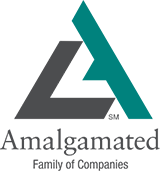
The recent passage of the SECURE Act 2.0, which was part of the massive year-end spending bill passed by Congress in December 2022, introduced new provisions that will help Americans with their retirement savings. The legislation combines three different retirement-focused bills that received bi-partisan support. One provision, in particular, raises the age from 72 to 73 for when individuals must start taking required minimum distributions (RMDs) from their retirement accounts. It went into effect as of January 1, 2023. SECURE Act 2.0 also stipulates that in 2033, the RMD age will again increase to 75.
Other Key Retirement Provisions
Another provision intended to help individuals in their retirement relates to catch-up contributions for those ages 60 through 63, beginning in 2025. Qualifying individuals would be able to contribute an additional 50% of the regular catch-up contribution limit, which kicks in at age 50. For example, if the provision was in place for 2023, an individual age 62 could contribute the maximum of $22,500 to his/her company’s 401(k) plan, in addition to a catch-up contribution of $7,500, plus an additional 50% of the $7,500 catch-up contribution totaling $33,750. When the new rules take effect in 2025, that $33,750 will likely increase.
As for individual retirement accounts (IRAs), the catch-up contribution limit would be indexed to inflation starting in 2024. Therefore, the current $1,000 cap on catch-up contributions would rise annually to keep up with inflation.
Support for Businesses Starting Employee-Sponsored Plans
SECURE Act 2.0 also ushered in changes to support companies that want to start an employee-sponsored retirement plan or encourage their employees’ participation in an existing retirement plan. The legislation creates a “Starter 401(k)” plan that simplifies requirements a small company must meet to begin, while also providing tax incentives for starting a plan. Effective 2025, employees at companies starting a new retirement plan would be automatically enrolled in the plan, and then see their annual contribution amount increase automatically. Employees would have the option to opt out of plan enrollment.
To encourage individuals with lower incomes to save more for their retirement, SECURE Act 2.0 enhances the Saver’s Credit by converting it to a “Saver’s Match.” The “Saver’s Match” is where the federal government would match an individual’s contributions, placing funds directly into his/her retirement account.
SECURE Act 2.0’s Other Key Provisions
There are several other important provisions introduced in the SECURE Act 2.0 legislation.
Beginning in 2024,
- Employees who have a Roth 401(k) plan won’t have to take RMDs from their account.
- Individuals can roll up to $35,000 from a 529 account to a Roth IRA in the name of the student beneficiary. The 529 account must have been in existence for at least 15 years.
Other provisions include:
- Giving employers the option to allow employees to create “rainy-day funds” in their retirement plan, whereby individuals could withdraw up to $1,000 from the plan for emergencies tax-free and without incurring any penalties. This provision was prompted by the pandemic which caused many individuals to pull money from their retirement accounts to cover unexpected expenses.
- Enabling victims of domestic abuse to withdraw up to $10,000 from their retirement accounts penalty-free.
- Enabling individuals experiencing impacts from a federally-declared disaster to withdraw up to $22,000 from an employer-sponsored plan or an IRA.
- Making long-term part-time workers eligible to participate in their company’s retirement plan after two consecutive years with at least 500 hours of service, unlike the current law, which requires three years of service.
- Creating a “retirement savings lost and found” national database to help individuals, who changed jobs or whose former employer moved, changed its name or merged with a different company, locate their benefits.
Employers have an opportunity to help their employees gain greater financial security by educating them about the SECURE Act 2.0 and its various provisions.








